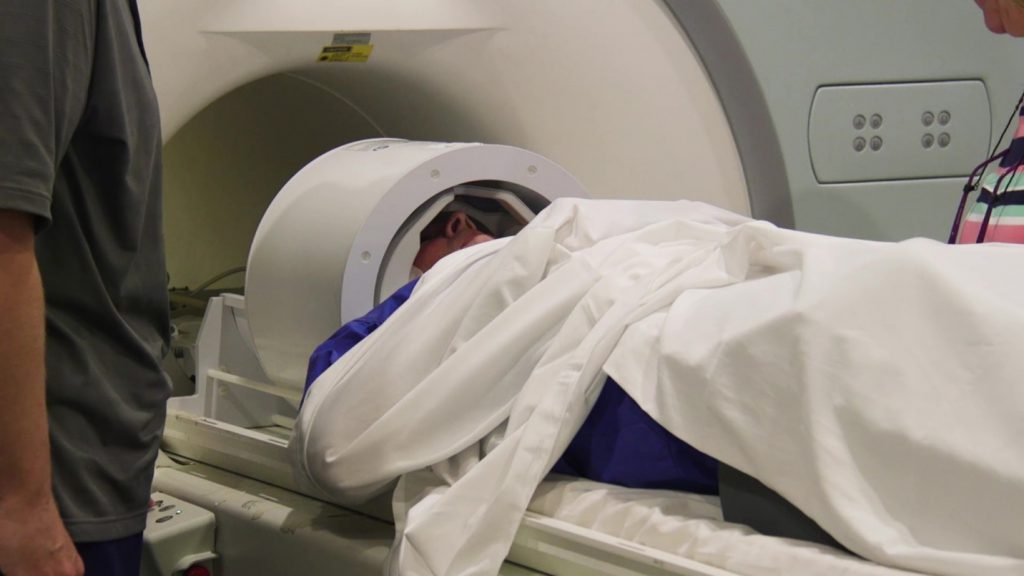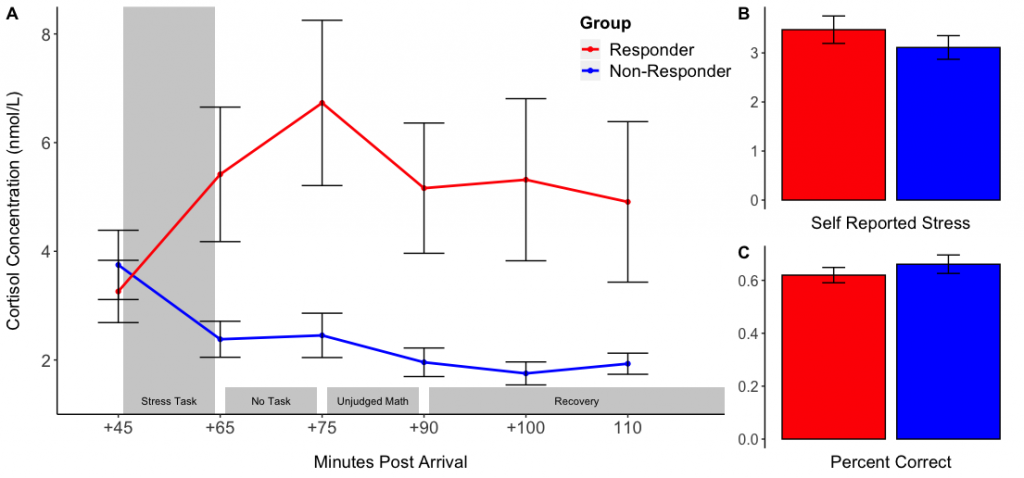Overcoming obstacles in order to study the brain during a standard social stressor.
By Bonny Donzella

There is a standard task that is often used to study stress responses in the laboratory. People give a speech and perform mental arithmetic aloud in front of judges while being filmed. The film, they are told, also will be rated. For most people, this is a challenge, and the body responds by producing an increase in cortisol. This hormone is sensitive to stress and prepares the body to use extra energy the challenge requires.
This speech/math task, called the Trier Social Stress Test (it was developed in Trier, Germany) is inherently social—the threat of social evaluation seems key to the cortisol response. What we know from previous work: If you are a school-age child, having a parent present during the task reduces the size of the response. If you are a teen, having a parent present doesn’t seem to help as much. If you are a teen, having a friend present may make it worse not better, but this needs more study to understand when & why. When the presence of others helps reduce stress, this is called “social buffering”.
Cool. But, there remains one large gap in our knowledge. What is happening in the brain during social buffering? Many labs around the world have tried to adapt the TSST stressor task for use in an MRI so that we can see the brain at work. There is a math-only version with adults that works for them, but the same task for children and adolescents doesn’t increase cortisol at all. We decided to take the whole TSST into the MRI scanner. We are calling this task the Minnesota Imaging Stress Test in Children (MISTiC Study). It’s a tricky thing to get pictures of the brain (which requires the person to lie very still) while they are giving a speech/doing math/and being judged (which tends to make people move). Plus, the MRI can itself be stressful, which changes the whole nature of the task.
We’ve done it! Max Herzberg, Ruskin Hunt, Kathleen Thomas, and Megan Gunnar teamed up to demonstrate the cortisol response to speech and math (and NOT to the scanner) during MRI. Yay! See Figure 1.
Cortisol response to Trier Social Stress Test

Further, we found differences in the brain during the stressor compared to non-stress conditions during the session. Specifically, we found robust task effects in the anterior cingulate and insula. The anterior cingulate is thought to play a role in cognitive functions including error monitoring. The insula is associated with processing social exclusion and evaluation. These both seem quite relevant to the threat of being judged for performance in the task!
But, “what about social buffering”, you say? I’m SO glad you asked! In our latest study, we have begun to explore different social partner conditions as participants perform the speech/math task in the MRI, and we are seeking families to help us learn more!
PARTICIPATE IN RESEARCH
MRI Study of Stress and Social Support
We are currently recruiting potential participants who will be invited to the University of MN when restrictions are lifted.
Participant eligibility:
– Youth who are between 11-14 years old.
– have never done this speech/math task.
– have no metal in the body that they can’t be taken off before going in the scanner.
We invite you to two University visits for surveys, a medical exam, and MRI while giving a speech/performing math. Heart rate and saliva samples will be collected to measure stress hormones. Some participants will be randomly chosen to invite a good friend to come along. Parents receive a $10 card per visit, and youth receive $30 & $40 for visits. Please email us at socialbuffering@umn.edu if you would like to participate. Thank you and we’re looking forward to hearing back from you soon!



